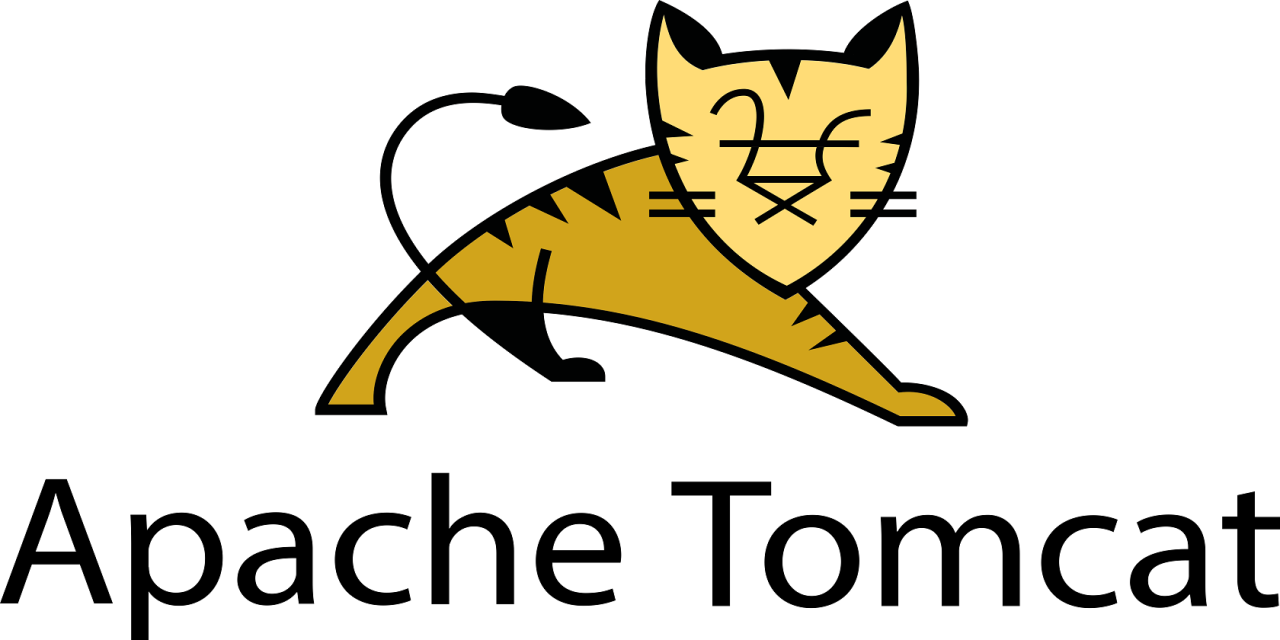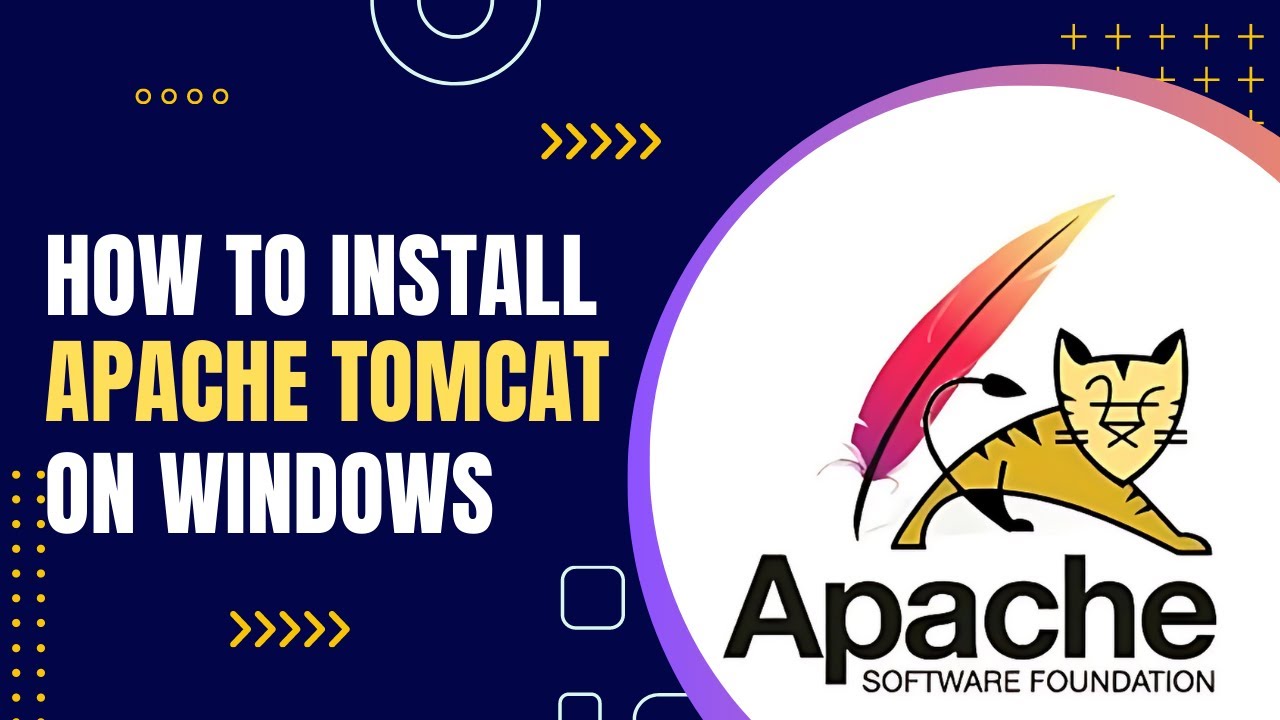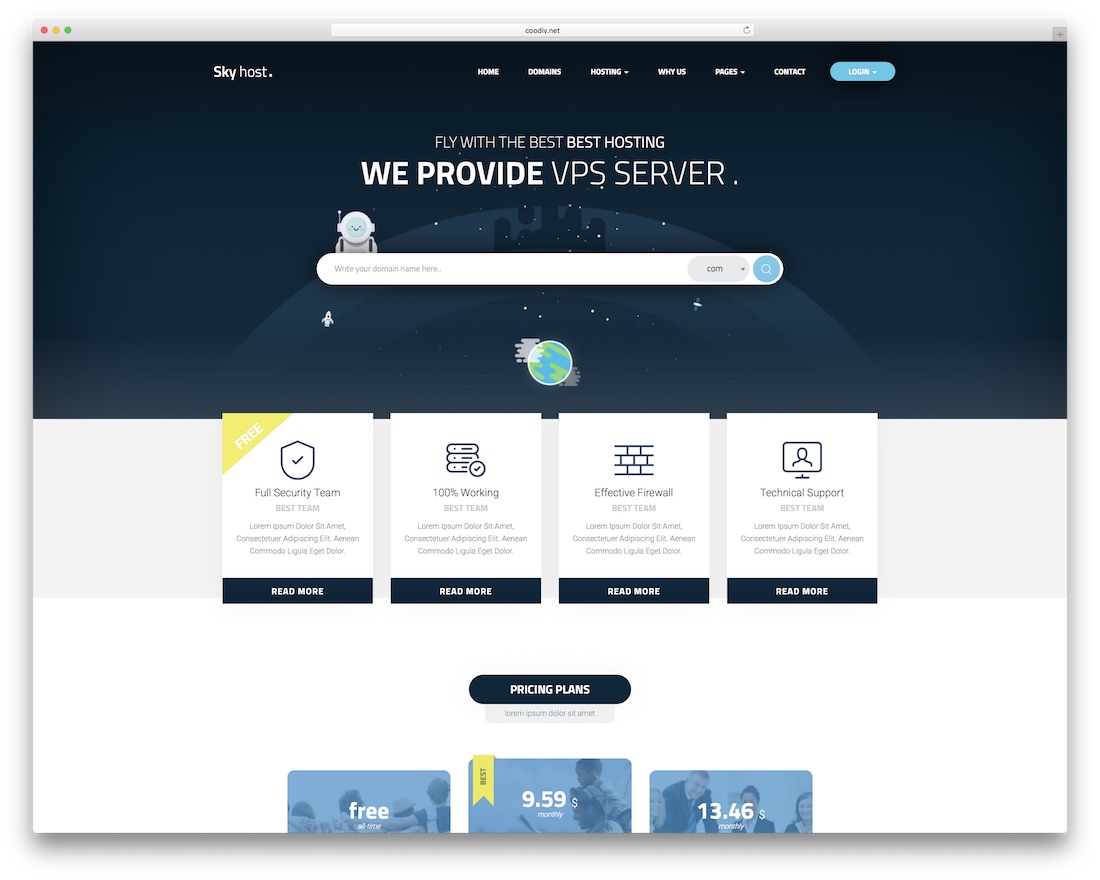Apache Tomcat 9, a robust and widely-used open-source servlet container, powers countless web applications across the globe. It’s a cornerstone of Java web development, offering a flexible and efficient platform for deploying and managing dynamic web content. From its origins as a foundational element of the Java Enterprise Edition (JEE) specification, Tomcat has evolved to become a versatile and indispensable tool for developers and system administrators alike.
This guide delves into the core features, installation, configuration, and best practices of Apache Tomcat 9, providing a comprehensive understanding of its capabilities and how to leverage its power for optimal performance and security.
Tomcat 9 Overview
Tomcat 9 is a popular open-source web server and servlet container that plays a crucial role in deploying and running Java web applications. As a successor to previous versions, Tomcat 9 boasts significant improvements and enhanced features that address modern web development demands. This overview delves into the key aspects of Tomcat 9, exploring its architecture, functionalities, and advancements.
Architecture and Components
Tomcat 9’s architecture is modular and follows the Java Servlet specification. It consists of several interconnected components that work together to process web requests and serve responses. The core components include:
- Connector: This component handles the initial reception of client requests. It listens for incoming requests on specific ports and protocols (HTTP, HTTPS, AJP) and converts them into a format suitable for processing by Tomcat.
- Engine: The Engine acts as the central processing unit of Tomcat. It receives requests from the Connector, manages the lifecycle of web applications, and dispatches requests to the appropriate Host.
- Host: A Host represents a virtual host or domain. It defines a collection of web applications that share the same configuration and are served under a specific hostname. Each Host can contain multiple web applications.
- Context: A Context represents a web application deployed within a Host. It holds the configuration and resources specific to that application, including servlets, JSP files, and static content.
Key Features and Improvements
Tomcat 9 introduces several notable features and improvements compared to previous versions, aiming to enhance performance, security, and compatibility:
- Servlet 4.0 Support: Tomcat 9 fully supports the Servlet 4.0 specification, which brings new features like HTTP/2 support, WebSocket enhancements, and improved security mechanisms.
- HTTP/2 Support: Tomcat 9 natively supports HTTP/2, a newer protocol that provides faster and more efficient communication between clients and servers, leading to improved website performance.
- Improved Security: Tomcat 9 strengthens security by incorporating features like TLS 1.3 support, enhanced authentication mechanisms, and improved protection against common vulnerabilities.
- Performance Enhancements: Tomcat 9 includes optimizations and enhancements to improve performance, including reduced memory consumption and faster request processing.
- Enhanced Management and Monitoring: Tomcat 9 offers improved management and monitoring tools, including a new web application manager that simplifies administration tasks.
Core Functionalities, Apache tomcat 9
Tomcat 9’s core functionalities are centered around handling web requests, processing them, and generating responses. It performs the following key tasks:
- Request Handling: Tomcat receives incoming requests from clients, parses them, and determines the appropriate web application to handle the request.
- Servlet Execution: Tomcat executes the corresponding servlet based on the request’s URL and HTTP method. It provides the servlet with access to request and response objects for data exchange.
- JSP Processing: Tomcat processes JSP files, converting them into Java servlets for execution. This allows for dynamic content generation based on user input and server-side logic.
- Static Content Serving: Tomcat serves static content like HTML files, images, and CSS files directly from the web application’s directory.
- Session Management: Tomcat provides session management capabilities, allowing web applications to maintain user state and data across multiple requests.
- Error Handling: Tomcat handles errors that occur during request processing, providing appropriate error pages and logging information for debugging.
Installation and Configuration: Apache Tomcat 9
Tomcat 9 is a powerful and versatile web server that can be easily installed and configured on various operating systems. This section will guide you through the installation process for Windows, Linux, and macOS, and then explore the key configuration options for customizing Tomcat 9 to meet your specific needs.
Installing Tomcat 9 on Different Operating Systems
Installing Tomcat 9 is straightforward and can be done in a few simple steps. The following sections provide detailed instructions for each operating system.
Windows
- Download the Tomcat 9 binary distribution for Windows from the official Apache Tomcat website. Choose the appropriate version based on your system architecture (32-bit or 64-bit).
- Extract the downloaded archive to a desired location on your computer. This will create a new directory containing the Tomcat 9 installation files.
- Navigate to the “bin” directory within the Tomcat installation directory. Double-click the “startup.bat” file to start the Tomcat server. This will open a console window displaying the server’s startup process.
- To stop the server, open a new command prompt window and navigate to the “bin” directory. Execute the “shutdown.bat” command.
Linux
- Download the Tomcat 9 binary distribution for Linux from the official Apache Tomcat website. Select the version compatible with your Linux distribution.
- Extract the downloaded archive to a desired location on your system. This will create a new directory containing the Tomcat 9 installation files.
- Open a terminal window and navigate to the “bin” directory within the Tomcat installation directory. Execute the “startup.sh” command to start the server. This will start the Tomcat server in the background.
- To stop the server, open a new terminal window and navigate to the “bin” directory. Execute the “shutdown.sh” command.
macOS
- Download the Tomcat 9 binary distribution for macOS from the official Apache Tomcat website. Choose the version compatible with your macOS system.
- Extract the downloaded archive to a desired location on your system. This will create a new directory containing the Tomcat 9 installation files.
- Open a terminal window and navigate to the “bin” directory within the Tomcat installation directory. Execute the “startup.sh” command to start the server. This will start the Tomcat server in the background.
- To stop the server, open a new terminal window and navigate to the “bin” directory. Execute the “shutdown.sh” command.
Configuring Tomcat 9
Once Tomcat 9 is installed, you can customize its behavior and settings by modifying the configuration files located in the “conf” directory within the Tomcat installation directory. Here’s a step-by-step guide for configuring Tomcat 9:
Setting Up Virtual Hosts
Virtual hosts allow you to host multiple websites on a single Tomcat instance. This is achieved by configuring different virtual hosts within the “server.xml” file.
- Open the “server.xml” file located in the “conf” directory using a text editor.
- Within the `
` element, add a new ` ` element for each virtual host you want to create. For example:
`
- The `name` attribute specifies the hostname or domain name for the virtual host. The `docBase` attribute defines the directory containing the web application files for the virtual host.
- The `
` element within the ` ` element maps the virtual host to the web application.
Security Configuration
Tomcat 9 provides various security features to protect your web applications.
- SSL/TLS Configuration: Tomcat 9 supports SSL/TLS for secure communication. You can configure SSL/TLS by modifying the “server.xml” file and adding an `
` element within the ` ` element. The ` ` element defines SSL/TLS settings, such as the keystore file, password, and SSL protocol. - Authentication: Tomcat 9 supports various authentication mechanisms, including basic authentication, form-based authentication, and digest authentication. You can configure authentication in the “server.xml” file by adding an `
` element within the ` ` element. The ` ` element defines the authentication constraints for the web application. - Authorization: Tomcat 9 allows you to control access to specific resources within your web applications. You can configure authorization in the “server.xml” file by adding a `
` element within the ` ` element. The ` ` element defines the authorization rules for the web application.
Logging Configuration
Tomcat 9 provides extensive logging capabilities to monitor the server’s performance and identify potential issues.
- Log Files: Tomcat 9 generates various log files in the “logs” directory within the Tomcat installation directory. These log files include access logs, error logs, and manager logs. You can configure the logging behavior by modifying the “logging.properties” file located in the “conf” directory.
- Log Levels: The “logging.properties” file allows you to specify the logging level for different components of the Tomcat server. The available logging levels include DEBUG, INFO, WARN, ERROR, and FATAL.
- Log Rotations: Tomcat 9 supports log rotations to manage the size of log files. You can configure log rotations in the “logging.properties” file using the `org.apache.juli.FileHandler` class. The `FileHandler` class allows you to specify the maximum log file size, the number of backup log files to keep, and the time interval for rotating log files.
Configuration Options
Tomcat 9 offers a wide range of configuration options to customize its behavior and performance. Some of the key configuration options include:
Performance Tuning
- Connector Configuration: The `
` element in the “server.xml” file defines the communication channels between the Tomcat server and clients. You can configure the `maxThreads` attribute to adjust the number of threads available for handling client requests. A higher value can improve performance for high-traffic websites, but it can also increase resource consumption. - Caching: Tomcat 9 supports various caching mechanisms, including session caching and page caching. You can configure caching in the “server.xml” file by adding a `
` element. Caching can significantly improve performance by reducing the need to repeatedly process the same requests. - Compression: Tomcat 9 supports HTTP compression to reduce the size of data transmitted between the server and clients. You can enable compression in the “server.xml” file by setting the `compression` attribute of the `
` element to “on”. Compression can improve performance by reducing the amount of data transferred over the network.
Security Enhancements
- Cross-Site Scripting (XSS) Prevention: Tomcat 9 provides built-in protection against XSS attacks. You can configure XSS prevention in the “server.xml” file by adding a `
` element with the `className` attribute set to “org.apache.catalina.valves.CrossSiteRequestForgeryValve”. - SQL Injection Prevention: Tomcat 9 does not provide direct protection against SQL injection attacks. However, you can use third-party libraries or frameworks to prevent SQL injection vulnerabilities in your web applications.
- HTTP Strict Transport Security (HSTS): Tomcat 9 supports HSTS to enforce secure communication over HTTPS. You can enable HSTS in the “server.xml” file by adding a `
` element with the `className` attribute set to “org.apache.catalina.valves.HstsValve”.
Deploying Web Applications

Deploying web applications on Tomcat 9 involves making your application accessible to users. Tomcat provides flexible mechanisms to achieve this, allowing you to choose the method that best suits your project’s needs.
Deployment Methods
Tomcat offers two primary methods for deploying web applications:
- WAR File Deployment: This method involves packaging your application into a WAR (Web Application Archive) file, which is essentially a compressed archive containing all the necessary files and resources. WAR files are a standard format for deploying web applications in Java EE environments.
- Directory Deployment: This method involves deploying your application directly as a directory structure within Tomcat’s webapps directory. This method is suitable for simpler applications or when you want to avoid the packaging step involved in creating a WAR file.
Deployment Process
The deployment process generally involves the following steps:
- Packaging: This step involves assembling your application’s code, libraries, configuration files, and other resources into a deployable unit. For WAR file deployment, you’ll use a packaging tool like Maven or Ant to create the WAR file. For directory deployment, you’ll simply organize your application’s files in a directory structure.
- Deployment: This step involves placing the packaged application (WAR file or directory) into Tomcat’s webapps directory. Tomcat will automatically recognize and deploy the application when it finds it in this directory. You can also use Tomcat Manager, a web-based administration tool, to deploy applications.
- Management: Once deployed, you can manage your application using Tomcat Manager. This tool allows you to start, stop, reload, and undeploy applications. You can also view logs, configure application settings, and perform other administrative tasks.
Web Application Context
The web application context is a virtual path that identifies your application within Tomcat. It determines the URL prefix that users will use to access your application. For example, if your application’s context is “/myapp”, users will access it through URLs like “http://localhost:8080/myapp/”.
- Context Path: The context path is specified in the application’s deployment descriptor (web.xml) or in Tomcat’s server.xml configuration file. It determines the URL prefix that Tomcat will use to route requests to your application.
- Impact on Deployment: The web application context plays a crucial role in deployment because it defines the URL structure for accessing your application. It’s important to choose a context path that is unique and meaningful for your application.
Security Considerations
Tomcat, being a widely used web server, is a prime target for security vulnerabilities. It is essential to understand common threats and implement robust security measures to protect your applications and data. This section will delve into common vulnerabilities, built-in security features, and best practices for securing your Tomcat 9 applications.
Common Vulnerabilities and Mitigation Strategies
Vulnerabilities in Tomcat can arise from various sources, including outdated software, misconfigurations, and insecure coding practices. It is crucial to address these vulnerabilities proactively to prevent exploitation.
- Remote Code Execution (RCE): Exploiting vulnerabilities in Tomcat’s web applications can allow attackers to execute arbitrary code on the server, giving them complete control over the system.
- Mitigation: Regularly update Tomcat to the latest version, as updates often include patches for known vulnerabilities. Additionally, use a web application firewall (WAF) to filter malicious traffic and prevent exploits.
- Cross-Site Scripting (XSS): This vulnerability allows attackers to inject malicious scripts into web pages, potentially stealing sensitive information or compromising user accounts.
- Mitigation: Implement robust input validation and output encoding mechanisms to sanitize user input and prevent the injection of malicious scripts.
- SQL Injection: Attackers can exploit vulnerabilities in database queries to gain unauthorized access to sensitive data or manipulate database operations.
- Mitigation: Use parameterized queries or prepared statements to prevent SQL injection attacks.
- Directory Traversal: Attackers can exploit vulnerabilities to access restricted directories or files on the server.
- Mitigation: Implement proper file system permissions and access control mechanisms to restrict access to sensitive directories.
- Denial of Service (DoS): Attackers can flood the server with requests, overwhelming its resources and making it unavailable to legitimate users.
- Mitigation: Implement rate limiting and traffic shaping mechanisms to prevent DoS attacks.
Built-in Security Features
Tomcat 9 offers a range of built-in security features to enhance the protection of your applications and data.
- SSL/TLS Support: Tomcat provides robust support for SSL/TLS encryption, enabling secure communication between the server and clients.
- Explanation: SSL/TLS encrypts data transmitted between the server and clients, protecting it from eavesdropping and tampering.
- Authentication and Authorization: Tomcat supports various authentication mechanisms, including basic authentication, form-based authentication, and JAAS authentication.
- Explanation: Authentication verifies the identity of users attempting to access the server, while authorization controls access to specific resources based on user roles and permissions.
- Security Manager: The Security Manager enforces security policies and restricts access to system resources.
- Explanation: The Security Manager can be configured to restrict access to specific files, directories, and network resources, enhancing security by limiting the actions that applications can perform.
- Web Application Security: Tomcat provides security features for web applications, including cross-site request forgery (CSRF) protection and session management.
- Explanation: These features help mitigate common web application vulnerabilities and enhance the security of web applications deployed on Tomcat.
Best Practices for Securing Tomcat Applications
Implementing robust security measures is crucial to protect your Tomcat applications from attacks. Here are some best practices:
- Regular Updates: Keep Tomcat updated to the latest version to benefit from security patches and bug fixes.
- Hardening the Server: Secure the server environment by implementing measures such as disabling unnecessary services, restricting access to sensitive directories, and using strong passwords.
- Security Policies: Implement comprehensive security policies that define user access, authentication methods, and acceptable usage guidelines.
- Web Application Firewall (WAF): Deploy a WAF to filter malicious traffic and prevent common web application attacks.
- Secure Coding Practices: Implement secure coding practices to minimize vulnerabilities in web applications.
- Regular Security Audits: Conduct regular security audits to identify vulnerabilities and implement corrective measures.
Best Practices and Tips
Tomcat 9 is a robust and versatile application server that offers a wide range of features for developing and deploying web applications. To leverage its full potential and ensure optimal performance, security, and scalability, it’s essential to follow best practices and implement strategic optimization techniques.
Optimizing Tomcat Performance
Optimizing Tomcat performance is crucial for delivering a seamless user experience and ensuring efficient resource utilization. Here are some key strategies to consider:
- Use a Suitable JVM: Tomcat relies heavily on the Java Virtual Machine (JVM). Choosing the right JVM and configuring it effectively can significantly impact performance. Consider factors like memory allocation, garbage collection settings, and thread pool sizes. For example, using a 64-bit JVM with sufficient memory allocation can improve performance significantly.
- Tune Tomcat Configuration: Tomcat provides a wealth of configuration options that can be adjusted to fine-tune performance. These options include the number of threads in the connector, the size of the connection pool, and the frequency of garbage collection. For instance, increasing the number of threads in the connector can handle more concurrent requests.
- Enable Caching: Caching frequently accessed data, such as static content, can dramatically reduce the workload on Tomcat and improve response times. Tomcat supports various caching mechanisms, including the use of HTTP caching headers and caching plugins.
- Minimize Resource Consumption: Tomcat applications often consume resources such as memory and CPU. Minimizing resource consumption through techniques like code optimization, efficient database queries, and reducing unnecessary dependencies can improve performance.
- Use a Load Balancer: Load balancers distribute incoming requests across multiple Tomcat instances, enhancing scalability and reliability. Load balancers can also provide failover capabilities, ensuring that your application remains available even if one Tomcat instance fails.
Enhancing Tomcat Security
Security is paramount for any web application, and Tomcat offers several features to enhance its security posture.
- Use Strong Passwords: It’s crucial to use strong passwords for Tomcat’s administrative accounts and for any sensitive configuration files. Strong passwords should be long, complex, and contain a mix of uppercase and lowercase letters, numbers, and symbols. For instance, a password like “P@ssw0rd123!” is much stronger than “password.”
- Enable SSL/TLS: Secure Sockets Layer (SSL) or Transport Layer Security (TLS) encrypts communication between the client and the server, protecting sensitive data from eavesdropping. Configure Tomcat to use SSL/TLS with appropriate certificates and encryption protocols. For example, using TLS 1.3 with strong cipher suites can provide robust security.
- Restrict Access: Control access to Tomcat’s administrative interfaces and sensitive resources using IP address restrictions, user authentication, and authorization mechanisms. For example, restrict access to the Tomcat manager application to authorized users and IPs.
- Keep Tomcat Up-to-Date: Regularly update Tomcat to the latest version to benefit from security patches and bug fixes. It’s important to stay informed about vulnerabilities and apply patches promptly. For example, the Tomcat team releases security updates regularly to address known vulnerabilities.
- Implement Security Best Practices: Adhere to general security best practices when developing and deploying web applications. This includes input validation, output encoding, and secure coding practices. For example, always validate user input to prevent SQL injection attacks and other vulnerabilities.
Common Pitfalls to Avoid
While Tomcat is a powerful application server, it’s essential to be aware of common pitfalls that can lead to performance issues, security vulnerabilities, or application instability.
- Insufficient Memory Allocation: Inadequate memory allocation can lead to OutOfMemoryError exceptions, causing application crashes or slow performance. It’s essential to configure Tomcat with sufficient memory based on the application’s requirements. For example, if an application requires a large amount of memory, you should increase the JVM heap size.
- Incorrect Thread Pool Configuration: A poorly configured thread pool can lead to performance bottlenecks or resource exhaustion. Optimizing the thread pool size based on the application’s concurrency requirements is crucial. For instance, if an application handles a high volume of concurrent requests, you should increase the number of threads in the connector.
- Lack of Regular Maintenance: Neglecting regular maintenance tasks such as log rotation, garbage collection tuning, and security updates can lead to performance degradation, security vulnerabilities, or application instability. For example, if logs are not rotated regularly, they can consume disk space and impact performance.
- Improper Deployment Practices: Incorrect deployment practices can lead to application errors or security issues. Ensure proper deployment procedures are in place, including artifact packaging, deployment configurations, and security settings. For example, deploying applications with insecure configurations can expose vulnerabilities.
- Ignoring Security Best Practices: Neglecting security best practices can lead to vulnerabilities that can be exploited by attackers. It’s essential to follow secure coding practices, implement appropriate security measures, and regularly review and update security configurations. For example, failing to validate user input can lead to SQL injection attacks.
Future Directions and Updates

Tomcat 9, as a mature and widely adopted web server, continues to evolve with ongoing updates and enhancements, reflecting the ever-changing landscape of web application development. The Tomcat community is actively engaged in shaping the future of Tomcat 9, addressing emerging trends and challenges, and ensuring its continued relevance in the dynamic world of web applications.
Future Updates and Enhancements
The Tomcat community is committed to continuous improvement and innovation. Future updates and enhancements are likely to focus on:
- Enhanced Performance and Scalability: Efforts are underway to optimize Tomcat’s performance and scalability, particularly in handling high-volume traffic and complex applications. This may involve improvements to the core engine, thread management, and connection handling.
- Improved Security: Security remains a top priority. Future updates will likely include enhancements to the security model, such as support for newer security protocols and stricter access controls, to protect against evolving threats.
- Support for Modern Technologies: Tomcat is expected to keep pace with advancements in web technologies, such as support for newer Java versions, emerging web standards, and integration with popular frameworks like Spring Boot and Jakarta EE.
- Cloud-Native Integration: The adoption of cloud computing is driving the need for containerization and microservices architectures. Future updates may focus on seamless integration with cloud platforms and container orchestration tools like Kubernetes.
Trends and Challenges
The Tomcat community faces several trends and challenges, including:
- The Rise of Serverless Computing: Serverless architectures offer a compelling alternative to traditional server-based deployments. Tomcat may need to adapt to this trend, potentially by exploring serverless-compatible deployments or integration with serverless platforms.
- Growing Importance of WebAssembly: WebAssembly (Wasm) is emerging as a promising technology for web application development. Tomcat may need to consider how to support Wasm applications or integrate with Wasm runtime environments.
- The Evolution of Java: The Java ecosystem is constantly evolving. Tomcat must stay aligned with newer Java versions, ensuring compatibility and leveraging new features and improvements.
- Maintaining Community Engagement: Ensuring active community participation is crucial for the long-term success of Tomcat. The community needs to attract and retain developers, fostering a collaborative environment for development and innovation.
Tomcat’s Role in the Evolving Web Application Landscape
Tomcat continues to play a vital role in the evolving web application landscape. Its mature, robust, and widely adopted nature makes it a reliable choice for various application types.
- Traditional Web Applications: Tomcat remains a solid foundation for traditional web applications, offering a well-established platform for building and deploying dynamic websites and web services.
- Microservices Architectures: Tomcat can be integrated into microservices architectures, providing a lightweight and scalable runtime environment for individual microservices.
- API Development: Tomcat is a popular choice for building and hosting RESTful APIs, leveraging its mature HTTP handling capabilities and support for Java frameworks.
- Enterprise Applications: Tomcat is often used in enterprise applications, providing a stable and secure platform for deploying business-critical applications.
Concluding Remarks

In conclusion, Apache Tomcat 9 remains a vital component of the modern web application landscape. Its versatility, scalability, and security features make it a top choice for developers seeking a reliable and efficient platform. By understanding its architecture, configuration options, and best practices, you can effectively deploy and manage web applications, ensuring optimal performance and a secure environment for your users.
Apache Tomcat 9, a popular Java servlet container, is a versatile platform for deploying web applications. For organizations needing robust hardware to host Tomcat 9, a Dell R710 server provides ample processing power and memory to handle demanding workloads.
The R710’s scalability and reliability make it an ideal choice for running Tomcat 9 in production environments, ensuring high performance and availability.




